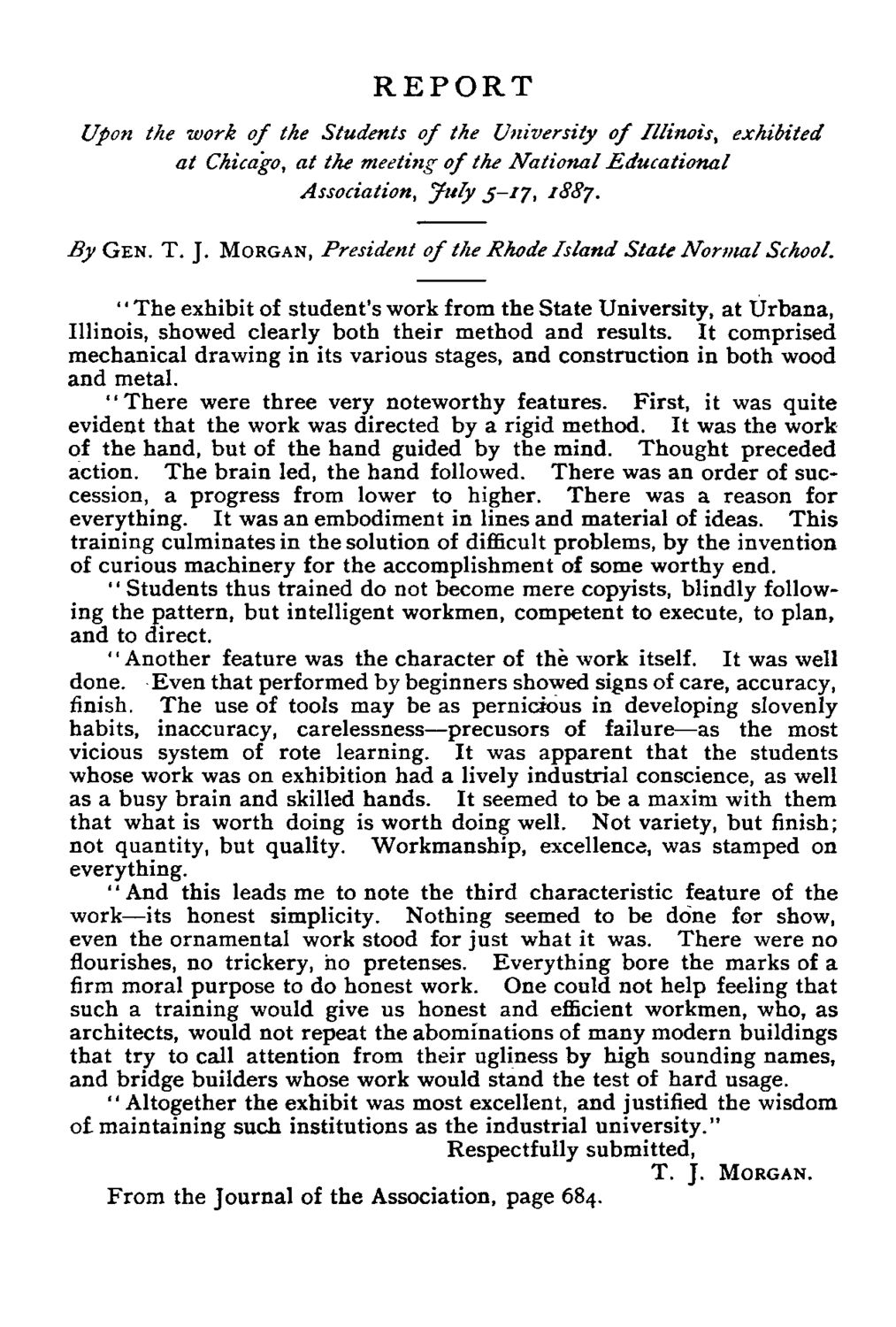| |
| |
Caption: Course Catalog - 1887-1888
This is a reduced-resolution page image for fast online browsing.

EXTRACTED TEXT FROM PAGE:
REPORT Upon the work of the Students of the University of Illinois, exhibited at Chicago, at the meeting of the National Educational Association, July 5-17, 1887. By GEN. T. J. MORGAN, President of the Rhode Island State Normal School. '' The exhibit of student's work from the State University, at Urbana, Illinois, showed clearly both their method and results. It comprised mechanical drawing in its various stages, and construction in both wood and metal. "There were three very noteworthy features. First, it was quite evident that the work was directed by a rigid method. It was the work of the hand, but of the hand guided by the mind. Thought preceded action. The brain led, the hand followed. There was an order of succession, a progress from lower to higher. There was a reason for everything. It was an embodiment in lines and material of ideas. This training culminates in the solution of difficult problems, by the invention of curious machinery for the accomplishment of some worthy end. 1 ' Students thus trained do not become mere copyists, blindly following the pattern, but intelligent workmen, competent to execute, to plan, and to direct. '' Another feature was the character of the work itself. It was well done. Even that performed by beginners showed signs of care, accuracy, finish. The use of tools may be as pernicious in developing slovenly habits, inaccuracy, carelessness—precusors of failure—as the most vicious system of rote learning. It was apparent that the students whose work was on exhibition had a lively industrial conscience, as well as a busy brain and skilled hands. It seemed to be a maxim with them that what is worth doing is worth doing well. Not variety, but finish; not quantity, but quality. Workmanship, excellence, was stamped on everything. '' And this leads me to note the third characteristic feature of the work—its honest simplicity. Nothing seemed to be done for show, even the ornamental work stood for just what it was. There were no flourishes, no trickery, ho pretenses. Everything bore the marks of a firm moral purpose to do honest work. One could not help feeling that such a training would give us honest and efficient workmen, who, as architects, would not repeat the abominations of many modern buildings that try to call attention from their ugliness by high sounding names, and bridge builders whose work would stand the test of hard usage. " Altogether the exhibit was most excellent, and justified the wisdom of maintaining such institutions as the industrial university." Respectfully submitted, T. j . MORGAN. From the Journal of the Association, page 684.
| |